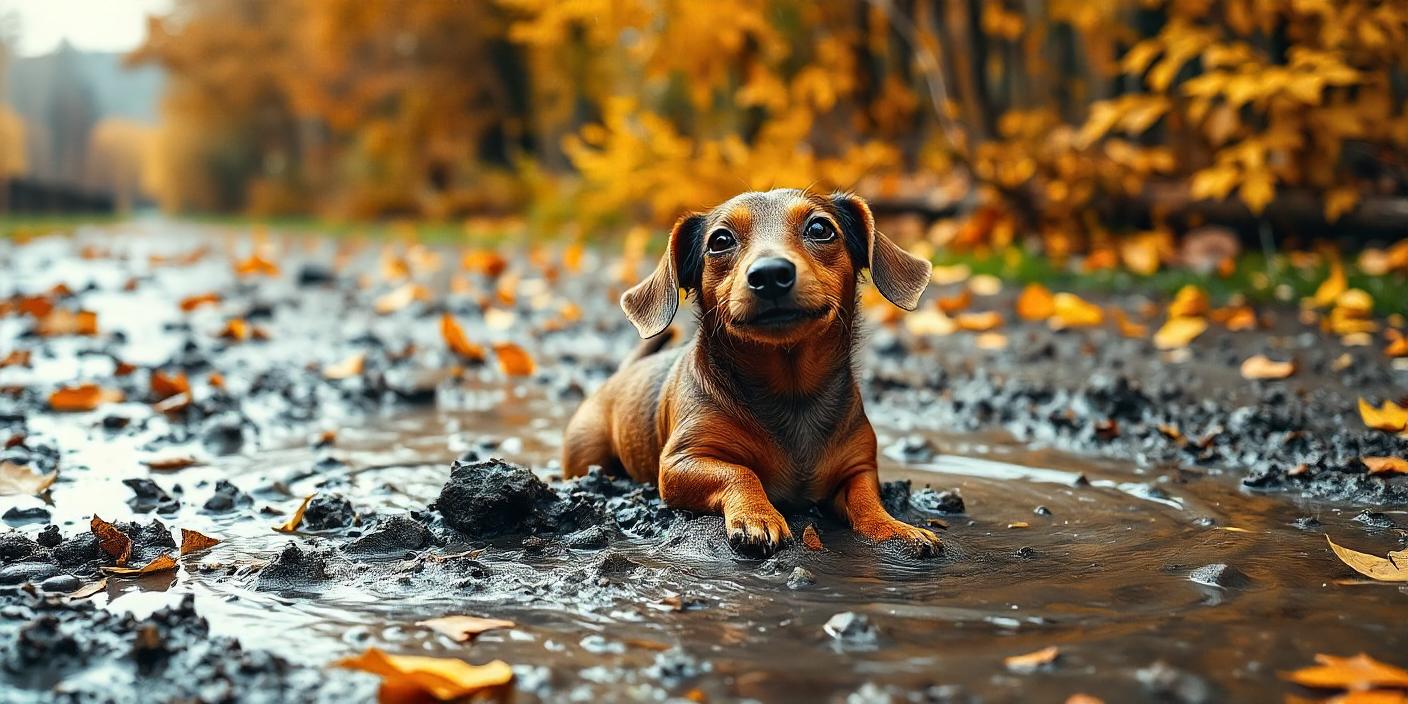18 Oct Why Dogs Love Rolling in Mud (and How to Handle It)
Mud rolling is a common sight among dog owners. The behaviour may seem unusual—or downright inconvenient—but it has deep roots in canine behaviour. Dogs rely heavily on their sense of smell to understand their environment, and mud offers a sensory-rich experience that’s almost irresistible to many pups. But what exactly about mud appeals so much to dogs? Here, we want to evaluate why dogs love rolling in mud.
Why Dogs Love Rolling in Mud?
Dogs may find mud appealing for various reasons, many of which tie back to instinctual drives and behaviours inherited from their wild ancestors. One reason why dogs love rolling in mud is for scent masking. In the wild, canines use strong-smelling substances, including mud, to cover their scent, avoid predators, or sneak up on prey. They could blend in better with their surroundings by masking their natural smell. This trait, though less necessary for domestic dogs, still lingers.
- Scent Marking and Animal Instincts: Dogs have a keen sense of smell, which serves as one of their primary senses. Rolling in strong-smelling substances, including mud, allows them to blend in with the environment by masking their scent and even marking their territory in a less direct way. For them, the scent in mud can communicate familiarity or ownership to other animals.
- Sensory Stimulation: Rolling in mud isn’t only about scent—it’s also about feeling. Dogs have sensitive skin and paws, and different textures can be incredibly stimulating. The coolness and texture of mud offer a distinct tactile experience that appeals to dogs’ natural curiosity. For many dogs, mud rolling is simply a form of sensory exploration that stimulates their paws and skin.
- Temperature Control: Mud isn’t only fun; it’s also functional. In warmer weather, mud can serve as a natural cooling agent. Just as wild animals might use mud to cool down, domestic dogs may instinctively seek out mud to regulate their body temperature. The mud creates a cooling layer on their skin, helping them beat the heat, especially if they have thick fur that can retain warmth.
How Dogs Use Mud for Camouflage
Mud rolling also taps into dogs’ instinctual camouflage behaviours. In the wild, mud can be used as a natural cover, helping animals blend into their surroundings. This behaviour may seem unnecessary in a backyard or at the local park, but for dogs, it’s a chance to engage with their natural instincts. Muddy fur can provide a sense of security, like camouflage helps animals feel protected from potential threats.
Managing Mud Play at Home
- If your dog loves rolling in mud, it doesn’t mean you’re destined for a lifetime of muddy floors. By preparing for mud play, you can make cleanup a manageable task while allowing your dog to enjoy the natural behaviours of being a dog.
- Mud-Friendly Outfits and Tools: Consider mud-friendly accessories like doggy raincoats or waterproof coats, which can reduce the amount of mud that clings to your dog’s fur. Dog-specific wipes and portable grooming tools can be a lifesaver for more intense mud lovers. These can help with quick cleanups and lessen the mess until bath time.
- Grooming Strategies: A good grooming session is essential after a mud-filled adventure. Use a dog-specific mild shampoo and a gentle brush to remove any mud that clings to your dog’s coat. Bathing your dog regularly, while not excessive, can keep its coat clean and healthy, preventing skin issues that could result from dried mud clinging to its fur for long periods.
- Muddy Behavior Prevention: If mud rolling becomes problematic, consider obedience training techniques that redirect your dog’s interest. Teaching commands like “leave it” or “stay” can work wonders in situations where mud is involved. However, it’s important to remember that this behaviour is natural and generally harmless, so try not to over-restrict it unless necessary.
Read More Here:
A Complete Guide to Brushing a Dog’s Coat: Tips and Techniques
When Mud Play Goes Too Far
For most dogs, rolling in mud is a fun, messy game. However, for some, it can become a compulsive habit. If your dog seems unable to resist mud regardless of the context, it could indicate a need for environmental enrichment or anxiety. In these cases, consulting a veterinarian or a canine behaviour specialist can be helpful. They can provide guidance on managing compulsive behaviours and finding healthier outlets for your dog’s energy.
The Last Word: The Joy of Letting Dogs Be Dogs
Mud rolling might be a hassle, but it’s also a chance for your dog to embrace instincts and enjoy being a dog. Allowing dogs to engage with their environment—mud and all—helps them remain healthy, mentally stimulated, and physically active. With a few precautions and proper grooming routines, you can let your dog experience the joy of mud without worrying about the mess.
FAQs
- Why do dogs love rolling in mud so much?
Dogs are attracted to mud for sensory stimulation, cooling down, and instinctual behaviours like scent masking.
- Can rolling in mud harm my dog?
While rolling in mud is usually harmless, excessive mud contact can lead to skin irritations or infections if not washed off.
- How can I keep my dog from getting muddy?
Consider using waterproof dog coats, keeping playtime supervised, and using commands to redirect their interest if needed.
- Do certain dog breeds roll in the mud more?
Some breeds with solid instincts, like hunting or herding dogs, may be more inclined to engage in mud play.
- Can I train my dog to stop rolling in mud?
Yes, you can train dogs to avoid mud with consistent commands and redirection techniques, although it may take time.
- What if my dog rolls in something worse than mud?
If your dog rolls in substances with strong odours, a thorough bath and deodorizing shampoo can help eliminate any unpleasant smells.




Sorry, the comment form is closed at this time.